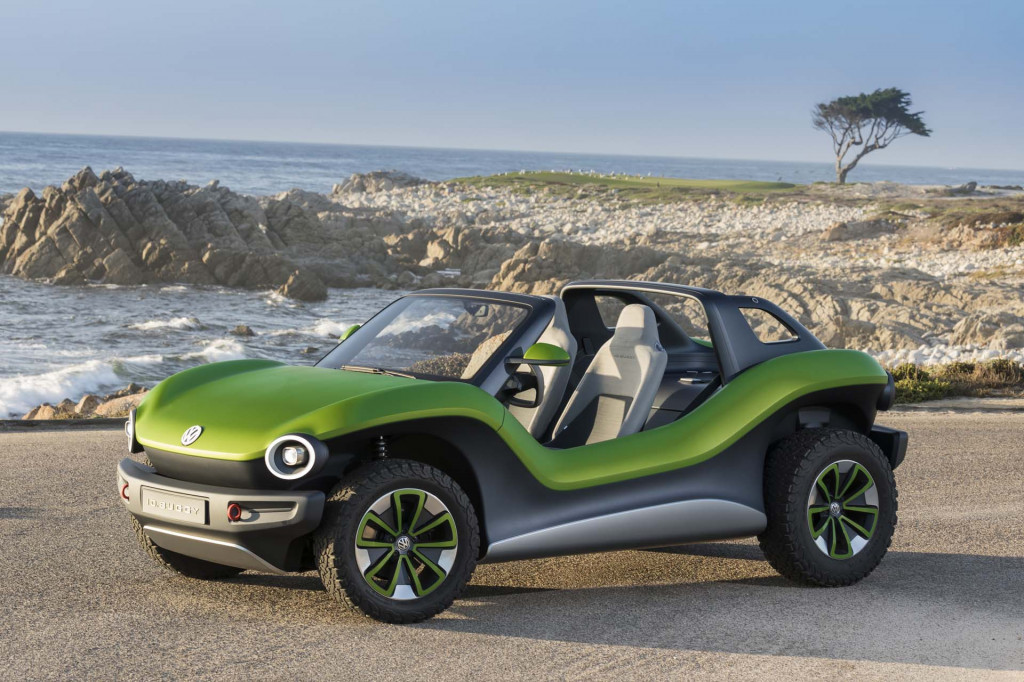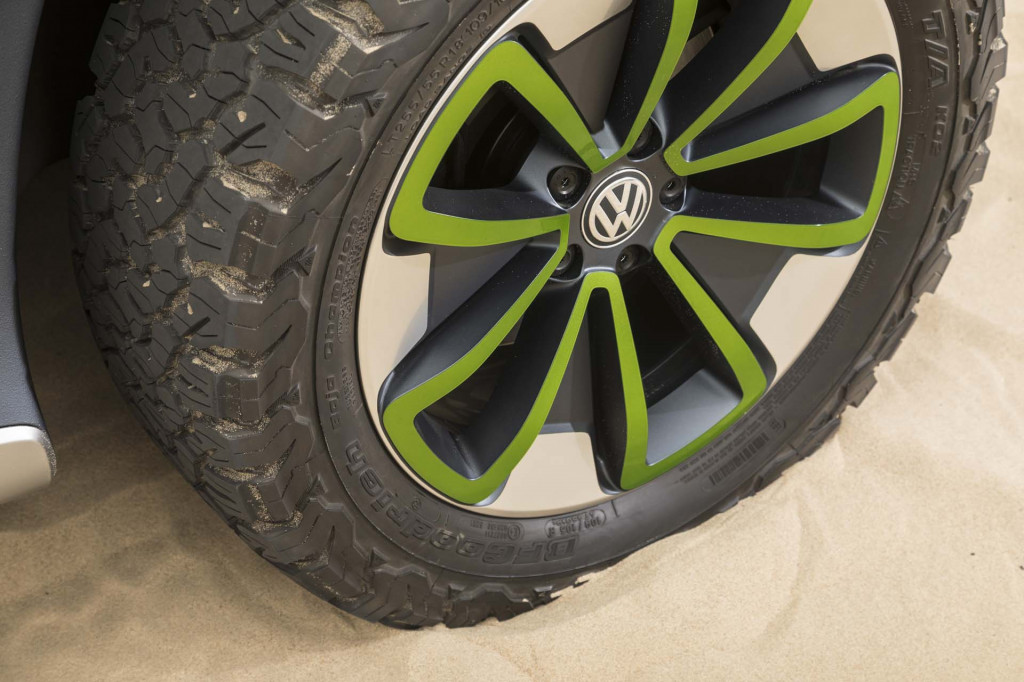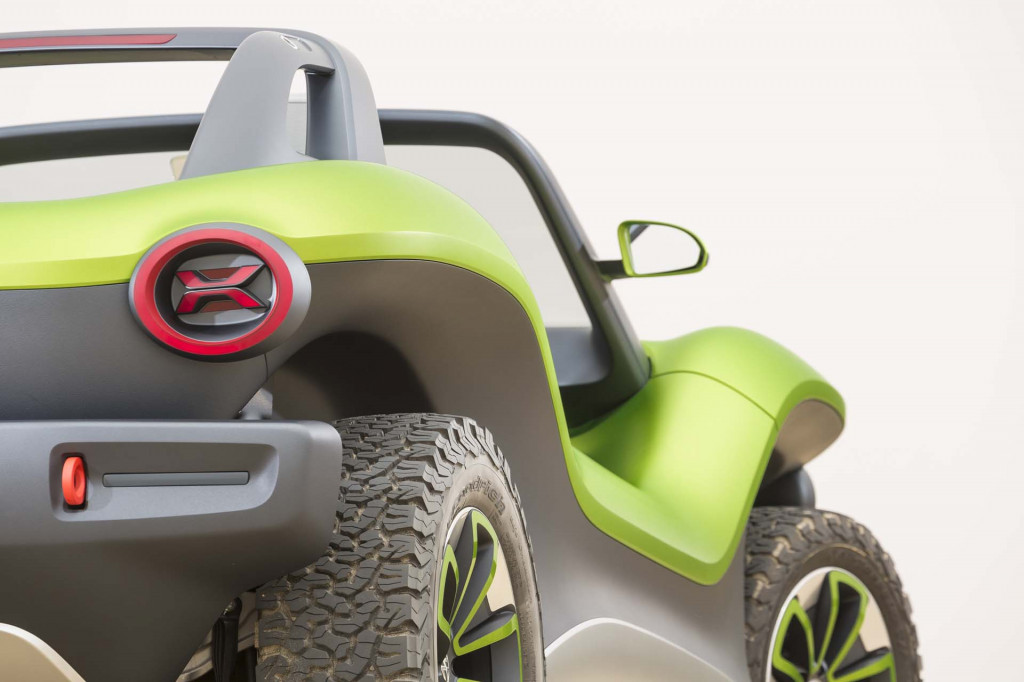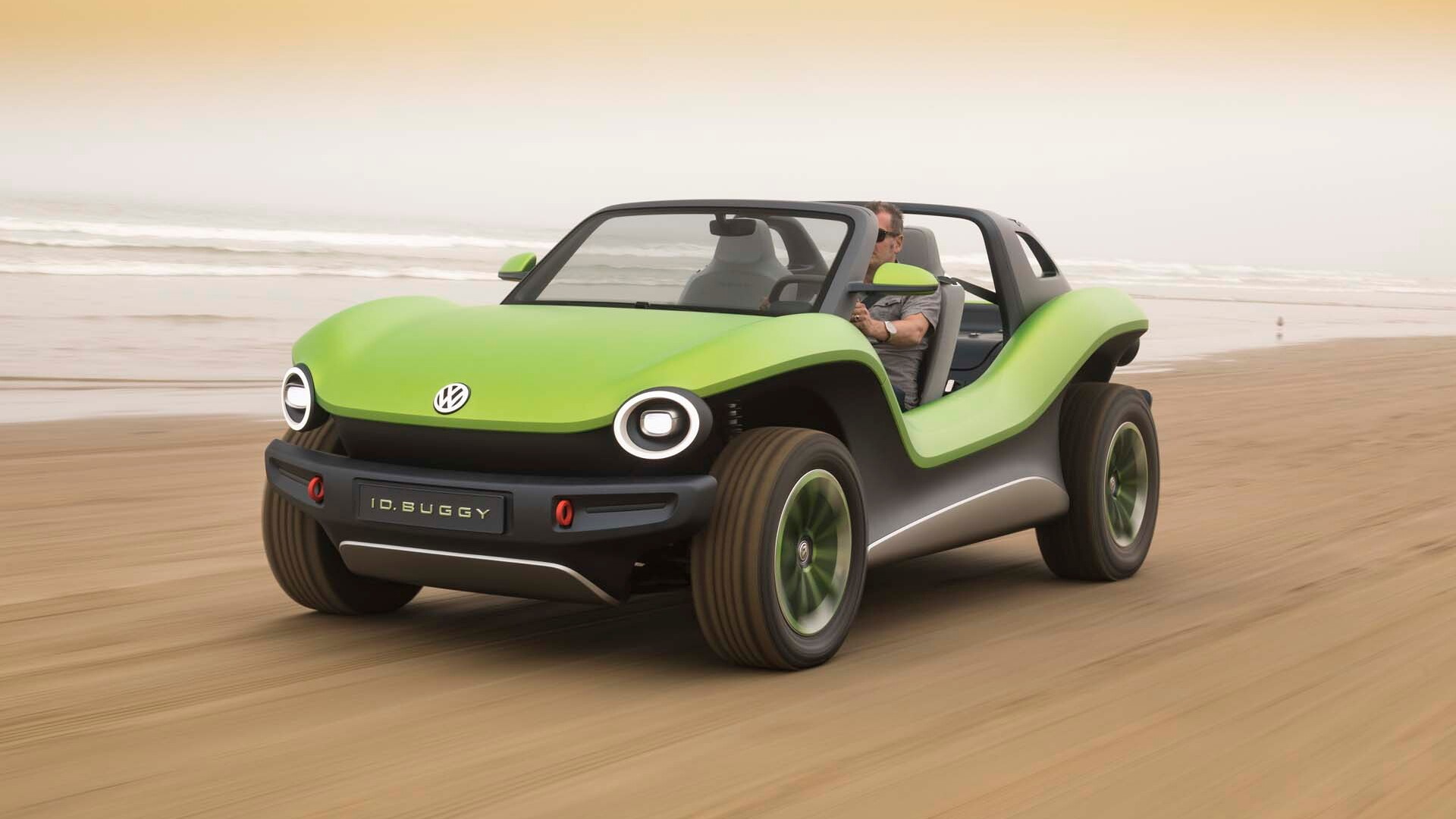Volkswagen’s first step toward fully electric vehicles feels like a cha-cha.
VW gave Green Car Reports a small test Thursday in California of its production-ready MEB platform, which will eventually underpin 10 million cars worldwide, riding underneath its ID Buggy concept vehicle.
The electric dune-buggy concept, which made its debut at the 2019 Geneva motor show, was the first vehicle driven on U.S. shores underpinned by a complete and series-built MEB platform that was not entirely handmade or a prototype. Although VW has confirmed five production vehicles (ID Crozz, Roomzz, Bus, Vizzion, and ID3) that will ride atop the architecture, the Buggy isn’t one of them.
Less of a “concept” and more of a “proof of concept,” the Buggy is propelled by a 201-horsepower (150-kilowatt) motor that’s powered by a 62-kwh battery that will arrive in the U.S. underneath the ID Crozz, the brand’s small utility. Smaller and larger batteries will be sold around the world, although cars bound for the U.S. likely won’t offer the smaller pack.
The concept we drove sports a wheelbase shorter by nearly 5 inches than the base production ID platform that spans 104 inches, but most of the Buggy’s internal mechanicals will appear in production cars.

VW ID Buggy Concept first drive
Besides the battery and motor, the ID Buggy uses MacPherson front struts and a newly developed rear five-link suspension supplemented by front and rear anti-roll bars. Front disc brakes arrest and will recapture some of the rolling energy, and drum brakes in the rear that sounded antiquated, serve a purpose. VW spokesman Jochen Tekotte said engineers preferred the rear-drum setup thanks to its lower rolling resistance, ability to withstand corrosion better than disc brakes, and effectiveness because they’re used far less than the front discs and rotors. Volkswagen didn’t definitively say if drum brakes would be used across all models, but their lower cost and efficiency gains may be too tempting for U.S.-market cars when they’re brought over early next decade.
The ID Buggy’s 62-kwh lithium-ion battery can provide up to 150 miles on a charge, measured by the WLTP standard, although our test drive was limited to just a few miles along the northern California coastline near Monterey.
In many ways, the Buggy concept car behaves like a production car. The steering wheel rotates roughly 2.5 turns from lock-to-lock, and despite a few audible creaks from the aluminum and fiberglass shell on top of the platform, the ID Buggy steers confidently.
Our early ride was limited to 25 mph or slower along the coastline—hardly enough to adequately test the platform’s road manners or true acceleration from its motor that makes 228 pound-feet, but a tempting look at what may be coming from future MEB models.

VW ID Buggy Concept first drive

VW ID Buggy Concept first drive

VW ID Buggy Concept first drive
On a sunny, misty California morning we hopped into the Buggy, which rode on hardly low-rolling-resistance 18-inch BFGoodrich KO2 all-terrain tires and set off. Everything in the concept vehicle was functional, aside from small zippers near the center tunnel that served as a makeshift glove compartment for small items. The speedometer, steering, steering wheel controls, accelerator, and brakes worked seamlessly, aside from slightly longer pedal travel and no regenerative braking feel at all. The Buggy crept slowly at “idle” but accelerated confidently toward 35 kph, lugging roughly 1,300 pounds of batteries. Engineers didn’t say how much the ID Buggy weighs, but safe speculation is about 3,300 pounds unladen—more with a bigger breakfast.
As we sauntered down the coastline, the big 255/155R18 tires swallowed any road imperfections with ease. Despite the Buggy’s take on a future all-electric off-roader, our route was planted entirely on tarmac. Engineers said the final suspension tune for the Buggy was softened a little for off-roadability despite our inability to run it into the soft sand.
The ID Buggy has no key, and column-mounted controls switch the car from park, with a hard button on the end cap, to drive, neutral, and reverse, which is controlled by twisting the column. Controls on the left side of the steering wheel turn on the headlights and turn indicators, although we didn’t use those.
The seats travel forward and backward by several inches, and despite being covered in a durable nylon cloth that’s easy to hose off (there’s even a drain spout in near the driver’s and passenger’s hips) they’re comfortable.

VW ID Buggy Concept first drive
VW engineers say the Buggy’s hardpoints will be the same on production cars. There’s a short dash-to-axle distance and a fist-sized space between the top of the tall, off-road tires to the bottom of the wheel well, which bodes well for any MEB-based future crossovers. All of which points to flexibility in the architecture that the ID Buggy is meant to show off—not necessarily a future product.
VW says the ID Buggy is meant to show that its MEB platform is ready for other manufacturers, small and big, and it's hoping to contract more automakers beyond Ford into the fold to build cars that ride atop their almost universal electric skateboard.
Although the ID Buggy is powered by the rear by the 150-kw motor, VW says designs for the platform also include a front-mounted 75-kw motor for all-wheel-drive traction.
The ID Buggy’s nine floor-mounted lithium-ion battery modules are placed low in the car’s center of gravity, which gave it a planted, quick turn around the coastline in the morning.
Even at low speeds, it’s clear that the ID Buggy—and it’s MEB platform—are ready to dance on the world’s biggest stage.
VW provided travel and lodging to Internet Brands Automotive to bring you this firsthand report.




















